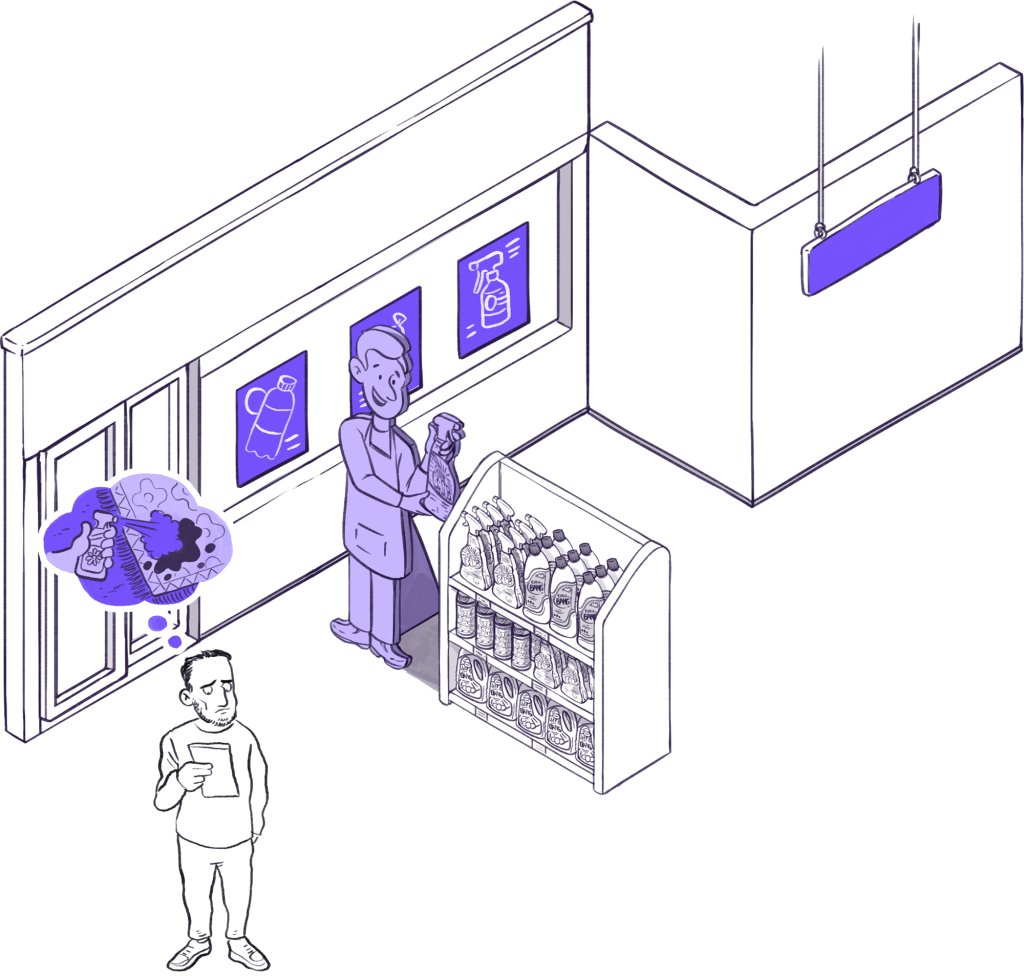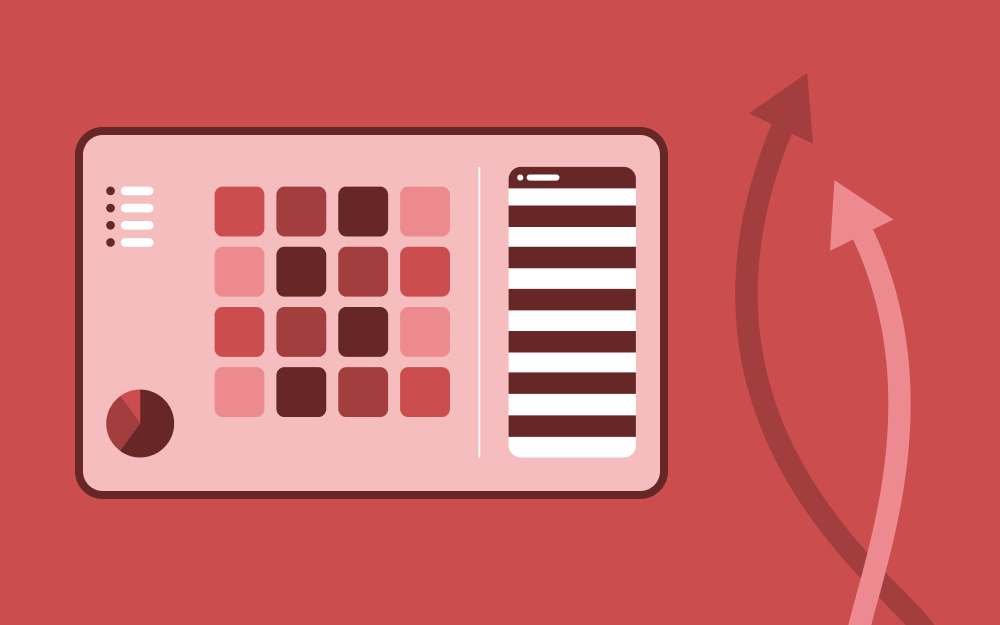Retail Marketing in a Recession UK: 2022 Advice from experts


If you were around in 2008, you know that recessions are bad news for retailers. We narrowly avoided one in 2020 and 2021, but we look certain to head into one now. How should retailers manage and market their stores to remain profitable through this difficult period?
Retailers must invest in marketing in the right areas throughout a recession to capitalise on growth opportunities in the following years. As money is tight and consumer spending is generally down, if retailers can provide value and capture market share during this period, they will retain business in the following boom years. It’s critical to use data and invest in the right areas that will yield greater results rather than speculative efforts.
At the time of writing, a recession looks imminent but hasn’t officially been announced. So let’s explore the signs of a recession in 2022 and how retailers can navigate the challenges to ensure they invest in marketing in the right areas and thrive on the other side.
The National Bureau of Economic Research (NBER) defines a recession as a significant decline in economic activity spread across the economy, lasting more than a few months, normally visible in real GDP, real income, employment, industrial production, and wholesale-retail sales. Previously, it was defined as two consecutive quarters of economic decline, as reflected by GDP.
Whichever way you look at it, the UK and USA are certainly showing signs of both of these definitions, even if it’s not yet official. For more information about the global economic states, we recommend you check out this article by the Financial Times.
UK Retailers thought the pandemic and the UK’s Brexit would cause a recession. While some industries were hit very hard, many retail sectors still performed okay, likely due to the following factors:
Now, however, the prices of everything have gone up, and consumers will look to save money wherever possible. Additionally, costs in sectors like energy are up 70% on average. This significantly impacts shoppers’ ability and desire to go out and buy “nice-to-haves” and, in some cases, essentials. But, after a few years of being unable to go abroad, a beach-side holiday is a top priority if shoppers can afford to splurge. These factors all point toward shoppers valuing price over quality, so retailers must rethink their strategy.
With that in mind, we asked leading retailers and marketers with decades of experience, and here are 10 tips for retail marketing during a recession.
In tough times, many retailers focus on their existing customers. However, as Harvard Business Review identified in 2009, you’re already collecting most of the money consumers spend. If consumers suddenly spend 25% less, most of that reduction will come from your share of those wallets. Data and history tell us that a recession is unlikely to deter your most loyal customers, and it’s unlikely that you will steal shoppers loyal to your competitors.
Retailers should focus on ‘switchers’ – people who currently shop across multiple stores (including yours). If they spend 20% with you currently, and you can increase that to 30%, a 25% overall downturn will leave you with 25% of their total spend.
This should inform your strategy going forwards once you have identified who those customers are and how you can attract them to buy more from you.
Firstly, it’s important to consider the needs of your customers. When looking for “switchers”, you could compare some of your highest-spending customers with those that don’t spend as much. Consider which categories those customers tend to purchase and which ones they don’t. This will help you identify where to focus your investment.
It is important to consider customer segments. With the data available, we can more accurately target different buyers with different needs. And each segment will be impacted by the recession in different ways. For example, those in more affluent areas will likely continue shopping as normal, and you don’t want to neglect them by focusing solely on reducing prices.
It’s critical to understand the trend of your customer purchasing behaviour and have clear segments that you can differentiate and ensure you still deliver the right products and messaging to retain their custom.
We recently partnered with 1010data, a retail analytics company, to explore how to combine the plethora of retail data and provide it to marketers to use in their marketing campaigns.
Armed with customer insight, you should review your product catalogue. When doing so, incorporate the historical performance of categories and product lines. Review sales performance during previous recessions (if you can) to understand what products did well. Use this knowledge to continue with these categories and even add to them.
Typically, you will favour essential categories, such as healthcare, food, and consumer staples, which perform continuously through difficult times. However, you will still require a broad mix and look for where you can differentiate.
You will undoubtedly continue with the categories you perform well in, but also look at which categories shoppers are going to competitors to buy, identify which are the highest opportunity and how you can lure those shoppers to your store.
As mentioned above, you will likely favour certain product categories, but people will still buy from non-essential categories too. However, their behaviour will likely favour lower-priced products in those categories.
When targeting switchers, changing to lower-priced products or offering significant discounts on categories can be a great way to attract business.
However, for categories that currently perform well, you will want to be prepared to make significant changes, but you also don’t want to change too early. Stay in touch with your shopping insights to identify trends when buyer behaviour changes. Then respond to that by making changes rather than pre-empting them.
If you have made significant changes to your product allocations, it’s important to communicate with your customers.
Use a combination of targeted online channels, broad media communications and physical in-store promotions to highlight discounts on chosen categories.
Getting your messaging right and communicating the above changes to lower-priced goods will greatly attract new customers and retain existing ones.
We discuss how to manage cross-channel marketing campaigns to maximise effectiveness.
There’s tremendous innovation available for retailers, from digital signage to Amazon Go and Artificial Intelligence.
And it can be tempting to look at new significant changes that will differentiate your store experience. However, when a recession is coming, shoppers are unlikely to try out a store for a better experience, instead favouring those that offer better value pricing.
For now, you need to get back to basics, focus investments on promotions and minimise overheads to preserve cash flow.
Indeed, Amazon has halted the roll-out of their Amazon Fresh stores because shoppers value low prices over novel buying experiences in hard times.
Retail marketers should expect to have their budgets cut or, at a minimum, kept the same during a recession. So, you’ll need to explore creative ways to do more with your resources.
Focus on eliminating waste in your current processes that free up some existing budget or time for people to do more with less.
Automation tools with proven ROI can be incredibly effective here as they enable you to reallocate your budget without spending more. For example, Colateral’s in-store marketing automation platform is proven to reduce administration tasks by 80%, allowing retailers to spend more time on things that matter.
For shoppers looking for bargains, getting your POS signage right is important. Help your customers find what they’re looking for. And if you are running a promotion, make sure they know about it!
Ask yourself how often in-store displays are not quite right. We’ve found display compliance for most retailers is usually 40-50%. That’s 50% more revenues you could be generating right there by ensuring your displays are accurately implemented. You need visibility of the messaging that’s going onto the shop floors. And visibility of the whole creative process so that you don’t hit challenges we saw for some retailers coming out of lockdown with signage arriving late.
Learn how we helped Paddy Power increase campaign compliance from 40% to 100%.
With multiple promotions across different categories, targeting a combination of new and existing customers, it’s critical to ensure the right message reaches the right audiences. Otherwise, you will be wasting the limited budget you have.
Ensure you’re aligning your online targeted messages with those shoppers receive in-store. Use your customer insight to target messages in certain stores that will resonate with the population there.
For example, the recession will affect some parts of the country less. Tapping into the psychological elements here to prompt different types of buyers is key. You want to accentuate the promotions to those feeling the pinch but don’t completely neglect those shoppers that will continue to buy what they want and need.
Check out our 8 tips for localised marketing

Align online marketing with in-store promotions to maximise advertising effectiveness.
Undoubtedly, there will be twists and turns over the next few months and years. Your marketing needs to adapt quickly and respond to emerging trends or issues. You need to quickly understand issues or challenges on the shop floor by having the right data. And you also need your team to be able to adapt quickly to implement these changes.
Our recent article explored how to measure in-store advertising effectiveness. With many retailers monitoring performance in their top 5-15 stores each month, having visibility of performance in every location can provide new opportunities to drive performance.
At Colateral, we say that you can save once but earn multiple times. Our retail marketing software streamlines your current processes so that you can find additional room in your budget and time for your people.
The collaborative platform streamlines your in-store marketing campaigns from briefing to execution, providing a collaborative platform for marketing, design, suppliers and stores. This gives you full visibility of what is happening in all your stores at once. Your store teams can highlight issues in real-time so that you can react and correct problems quickly.
Additionally, your marketing team can spend less time on spreadsheets and more on value-added tasks that drive revenues. Like tailoring campaigns to specific demographics or stores or spending more time to get the message right in your POS signage.
Let us help you during this difficult time, and speak to a team member.
 Thought Leadership
Thought Leadership
With the hype surrounding e-commerce and direct-to-consumer, it's easy to lean towards these channels when...
 Thought Leadership
Thought Leadership
With up to 90% of a retailer's revenues coming from spend in store why isn't more available to help drive innovation when consumers walk through the front door? Well, the good news is, it is.